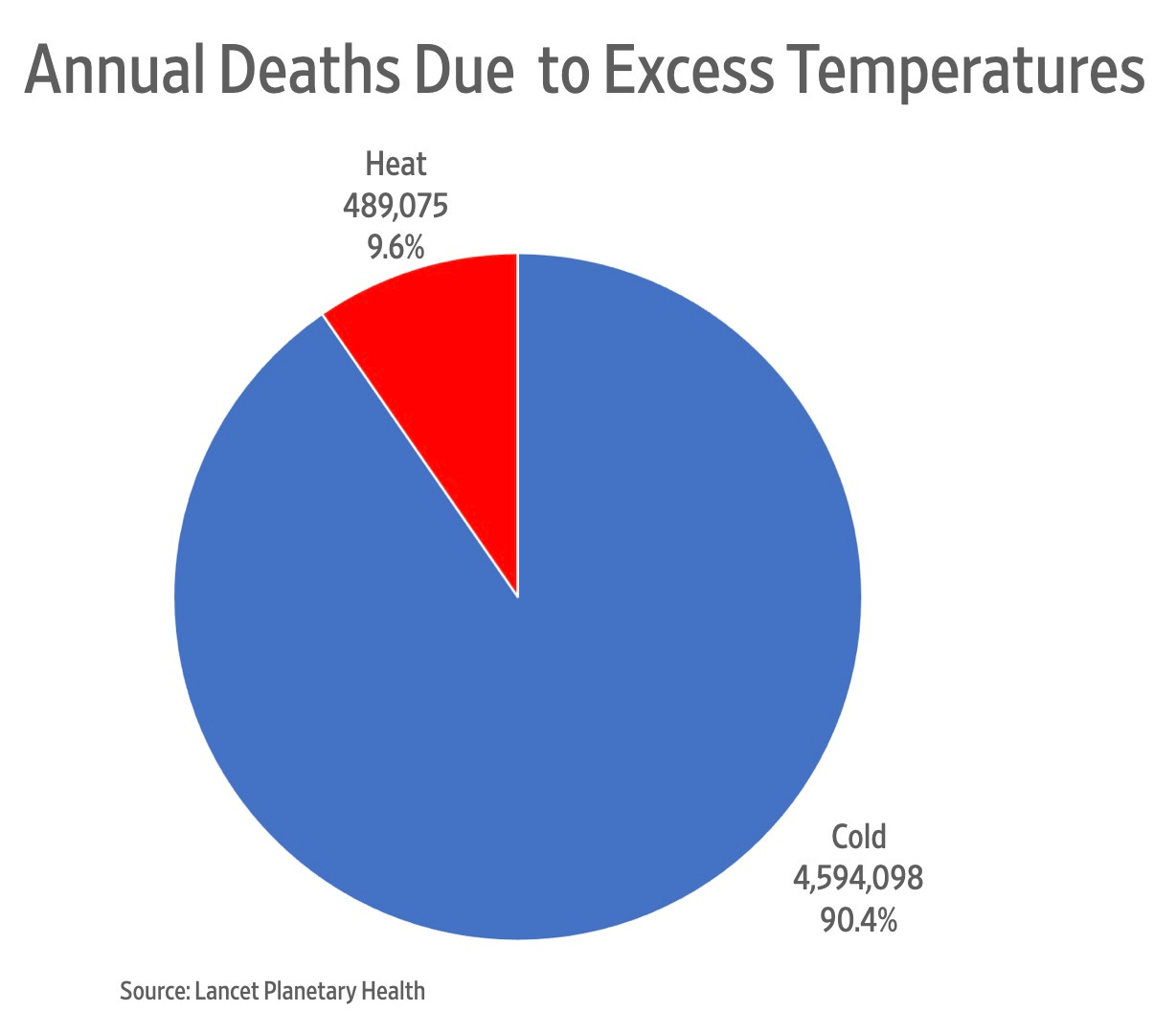“There are no solutions. There are only trade-offs.” So noted the great economist-historian Thomas Sowell. How do we apply this principle to climate policy? The most reasonable way to measure the tradeoff relationship between temperature and mortality is to look at both deaths by cold and deaths by heat. Danish author, and Copenhagen Consensus Center president, Dr. Bjørn Lomborg has noted that recent warmer temperatures are saving 166,000 lives each year. His conclusion is based on a Lancet journal article co-authored by 69 researchers. The Lancet article reports that annual average excess deaths due to non-optimal temperatures for 2000–19 was 5,083,173. This represents around 9.43 percent of the 54 million deaths that occur every year. Of these 5,083,173 excess deaths, 4,594,098 (90.4 percent) are due to excess cold and 489,075 (9.6 percent) are due to excess heat. For every death due to excess heat, there are 9.4 deaths due to excess cold.
As the planet has recently warmed slightly, the number of deaths due to heat have increased. But the number of deaths due to cold have decreased even more. It is the net difference that counts. Deaths by heat increased by 116,000 while deaths by cold decreased by 283,000, putting the net difference at a gain of 166,000 lives. Every additional death due to increasing temperature correspond to 2.43 lives saved from increasing temperature.
The facts strongly suggest that if you really want to reduce deaths due to temperature, you must be in favor of warming up the planet.
Gale Pooley is a Senior Fellow at the Discovery Institute and a board member at Human Progress and the co-author of the forthcoming book, Superabundance.
















Share this post